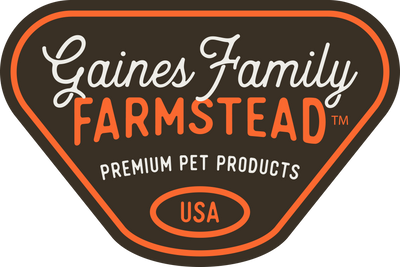
Can Dogs be Allergic to Carpet?
Can Dogs be Allergic to Carpet?
Can dogs be allergic to carpet? Yes. Just like people, dogs can experience allergies triggered by things in their environment, carpet included.
In this blog post, we'll dive into the topic of dogs and carpet allergies, exploring the signs to watch for and providing tips to manage and prevent those pesky allergic reactions.
Understanding Dog Carpet Allergies
Allergic reactions happen when a dog's immune system goes a little haywire and reacts to certain things in their surroundings. It's like their body is on high alert, causing them to experience all sorts of unpleasant symptoms.
The Culprits Lurking in Your Carpet
Let's dig into what might be hiding in your cozy carpet that could trigger an allergic reaction in your furry friend:
-
Dust Mites: These microscopic creatures thrive in carpets, feasting on dead skin cells and causing allergies in sensitive dogs. They may be small, but they can wreak havoc on your pup's respiratory system.
-
Mold Spores: If your carpet has ever been exposed to moisture or humidity, it can become a breeding ground for mold. Mold spores can float in the air and cause allergic reactions in dogs when inhaled or when they come into direct contact with them.
Signs of Carpet Allergies in Dogs
How can you tell if your dog is allergic to your carpet? Keep an eye out for these telltale signs:
-
Excessive Scratching: If your pooch seems to be scratching like crazy, it could be a sign that something in your carpet is irritating their skin or causing an allergic reaction.
-
Sneezing and Runny Nose: Is your furry friend constantly sneezing or experiencing a runny nose? It might be a response to allergens lurking in your carpet.
-
Watery Eyes and Redness: Keep an eye out for watery or red eyes in your dog. These could be signs that your carpet is causing them discomfort.
-
Itchy and Irritated Skin: Dogs with carpet allergies may develop skin irritation, redness, or rashes, especially in areas that come into direct contact with the carpet, like their belly or paws.
Why Are Dogs Allergic to Carpet?
So, how does your dog come into contact with those carpet allergens? Well, it's not complicated. Dogs spend a lot of time sniffing around and lying on carpets, which means they're in close contact with all the things that may trigger their allergies.
Those pesky dust mites and mold spores can easily find their way into your dog's respiratory system or come into contact with their skin.
Managing Carpet Allergies in Dogs
To help your furry baby cope with carpet allergies, here are some tips to keep the sniffles at bay:
-
Regular Vacuuming: Make it a habit to vacuum your carpets regularly using a vacuum cleaner equipped with a high-efficiency particulate air (HEPA) filter. This will help remove dust mites, allergens, and other irritants from the carpet fibers.
-
Deep Cleaning: Consider deep-cleaning your carpets periodically using hot water extraction or steam cleaning methods. This can help eliminate allergens and reduce the presence of dust mites and mold spores.
-
Air Purification: Use air purifiers with HEPA filters to help reduce airborne allergens in your home, including those originating from your carpet.
-
Minimize Carpet Exposure: If your dog is particularly sensitive to carpet allergens, you may want to limit their access to carpeted areas. You can designate specific areas with non-carpeted flooring where your dog can spend most of their time.
-
Wash Bedding and Rugs: Regularly launder your dog's bedding, blankets, and any rugs they frequently come into contact with. Use hot water and a hypoallergenic detergent to eliminate potential allergens.
Allergy Prevention
To prevent carpet allergies from becoming a constant battle, here are a few additional steps you can take:
-
Consider Hard Flooring: If allergies persist or are severe, you might consider replacing carpeted areas with hard flooring options like tile, laminate, or hardwood. These surfaces are easier to clean and have fewer allergens lurking within.
-
Allergy-Friendly Carpets: If you're in the market for new carpeting, consider choosing allergy-friendly options that are specifically designed to minimize allergen accumulation, such as low-pile or tightly woven carpets.
-
Regular Maintenance: Maintain good indoor humidity levels to prevent mold growth, promptly address any water spills or leaks
Keep Your Pup Happy & Healthy
Now you know that your beloved carpet could potentially trigger allergies in your furry friend. By being aware of the possible allergens in your carpet, taking preventive measures, and implementing proper cleaning and maintenance routines, you can create a safer and more comfortable environment for your dog. Remember, if you suspect carpet allergies in your dog, consult with your veterinarian for proper diagnosis and guidance. Together, we can ensure our four-legged pals stay happy, healthy, and free from carpet-induced sneezes!
